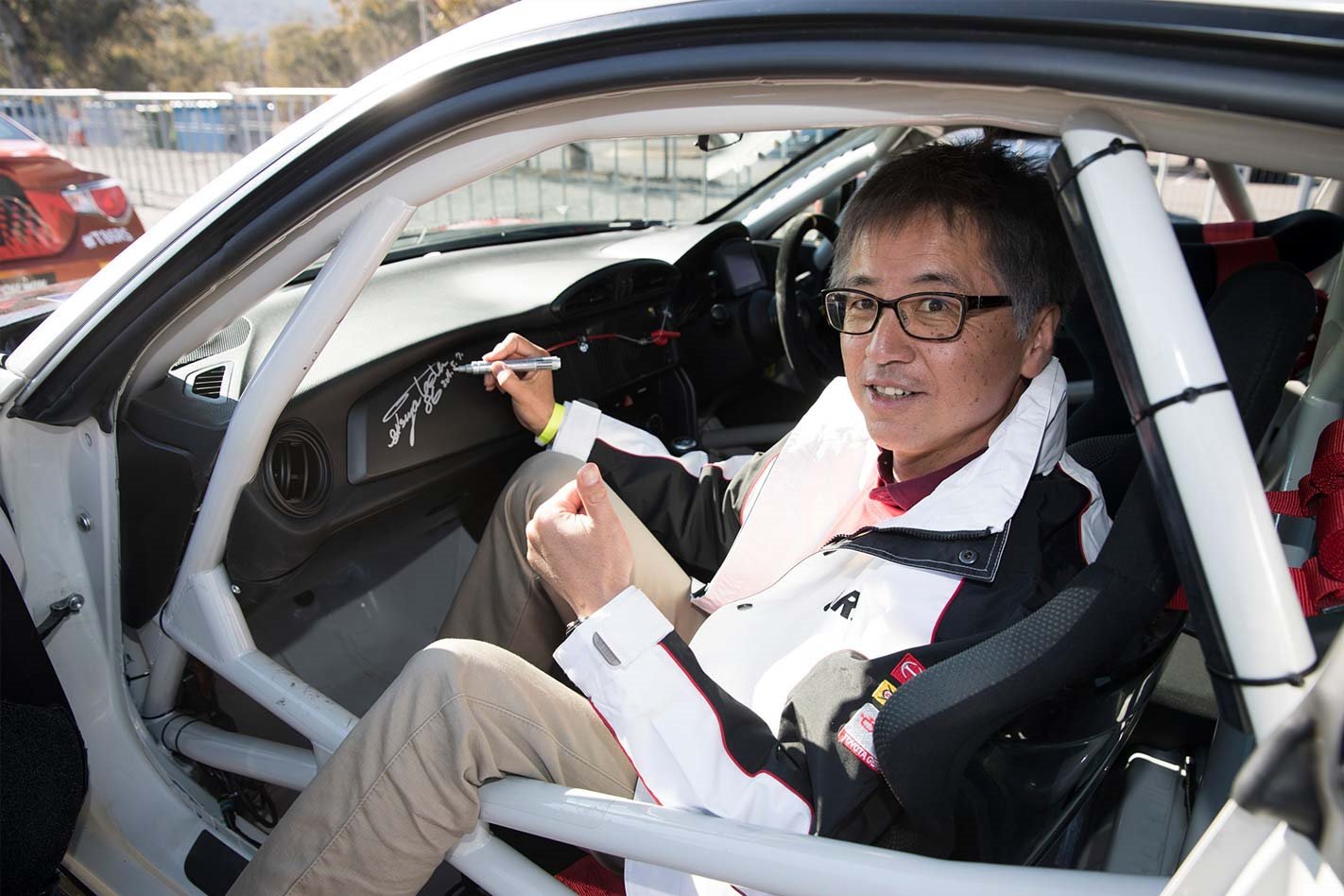Who is Tetsuya Tada? Well, he’s ‘Mr 86’, of course.
Tada joined Toyota as a graduate software engineer; ABS and traction control were his bread and butter. After stints in Japan’s frosty northern island of Hokkaido and at Toyota’s Higashi-Fuji research facility, he spent three years in Europe validating road and race cars.
Later, as a chief engineer, he spent over a decade developing a bevy of largely soulless boxes for Toyota to sell to the masses, until being relieved of that in 2007 and handed the somewhat more stimulating task of overseeing creation of the 86.
Here’s four life lessons he has picked up during his career:
As a child, I often bought and read Japanese car magazines, such as Motor Fan and Auto Sports, while most other children were reading manga comics. Perhaps this was the influence of my father. He was passionate about cars; he took part in rallies and let me serve as his co-driver. During that time, I made a huge effort to learn rally terms and write pace notes. I also experienced what it felt like to win. Based on these experiences and others, it was natural for me to also want to drive cars.
The first car I bought was an AE86. Unmodified, it had strong understeer and would not stop once it broke traction and started to drift. It was a challenge to make turns that way. But it was fun to do the modifications to the car myself and then use driving techniques to overcome the weaknesses of the car. I think this is the background of why I like cars.
When it comes to developing cars, the master is [the late] Isao Tsuzuki, the chief engineer of the previous A80-generation Supra. Tsuzuki took the time to teach me what car development was all about. Although, the first development team I was part of was for a family car called the Raum. While working on developing this car, I tried to think about it from a customer’s point of view. This led to reviewing some items which I took for granted, such as why is the steering wheel round? Do customers really understand the meaning of the warning lamps in the dashboard? While many of these questions are common sense to engineers, they may not be interpreted in the same way by the customer.
In fact, this experience helped later in the development of the 86. Another question that came up was: “Do sports cars need to be fast?” You see, in the planning phase, sometimes our focus was not on things like speed, meaning that sometimes it seemed our plans lacked common sense. In the end, however, I think we succeeded in developing an 86 that was different from a traditional sports car, as we wanted drivers to take control of the car and pursue overall excitement, rather than being in pursuit of absolute speed or time on a circuit, typical at the time.
Many people are involved when it comes to making a car. At one point, Toyota often heard from stakeholders that, “Toyota cars are boring”, or “Toyota designs its cars based on majority votes and decisions”. Hearing this was hard, and my personal desire was to help change this perception.
In fact, the 86 was the first car design that was not based on a committee decision system. By that time, the company had set a rule stating that we would not be able to move forward with a car design unless the vehicle received above a certain score at the design review committee. An unfortunate side effect of a rule like this was that sometimes a unique or particularly radical sports car design, for example, wouldn’t make it to the next step. Although not easy, in the case of the 86, we were able to change the design process to where we would only discuss the design with the President instead of the committee. The same process has been followed over the course of development of the new-gen Supra.
People often talk about how fun it must be to develop sports cars. They imagine that we often travel to tracks to test all the various sports cars from around the world. While there is some of that, it is less than perhaps five percent of the development process. However, developing sports cars is harder than that of normal cars, in my opinion. Customers demand performance, and the car often requires many exclusive parts at low volume, meaning that it can be difficult to make a profit.
Most of the time during development, in fact, is dedicated for day-to-day, normal, shop-type work. Of course, sports cars are gorgeous, but there are so many challenges that we must address prior to even getting close to launching it. We, the engineers behind the car, are happy if the customers driving the sports car take the time to think about the efforts behind its development.
There are many indexes that show the performance of sports cars, but that is not enough to describe how fun it is to drive them. What’s more, good cars need to make you smile when you drive. We have been developing our cars with such feelings.






